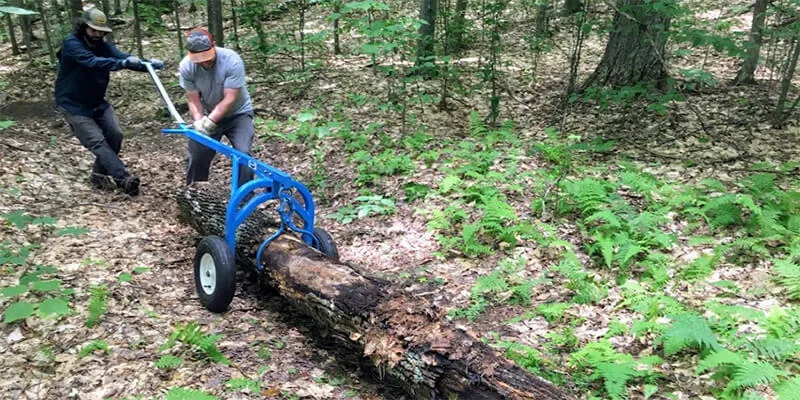Throughout the summer of 2017, I had the privilege of interning as Forest Lands Steward at UVM’s Jericho Research Forest (JRF), located about 20 minutes east of campus in Jericho, Vermont. I worked closely under the supervision of JRF’s property manager Ralph Tursini to work on a number of projects and tasks.
As with any land management operation, routine upkeep and maintenance of the property were a must, and while this may not have been the most exciting aspect of the internship, it was nice to work outside doing some casual manual labor like mowing the lawn and splitting firewood to keep myself active. Other general projects around the homestead base area and elsewhere included planting and watering young American chestnut saplings in the tree nursery, hauling tree branches that were limbed by the power company into the woods, constructing a wire fence to protect a taller transplanted American chestnut sapling from deer browse on the property’s central grass, cleaning the Orr center (a building used by student lab groups) a couple times over the summer, among others. We also removed a few patches of invasive Japanese knotweed from a floodplain near the JRF boundary, and I learned more about why invasives are unwelcome in our native forests.
As Ralph and I delved more into forest science, I began a project we referred to as the Access Network Assessment Project, or ANAP. This involved assessing the property’s woodland roads and skid trails for different attributes where I partitioned sections of trails into discrete segments three chains in length (one chain = 66 ft), each for which I recorded the steepest slope, level of soil water drainage, level of soil surface erosion, and number of functional water drainage structures present. Amid this process, I devised an instructional guideline of the methods and tools necessary for continuing this data collection project in the future (likely by next summer’s intern); the intent was to create a document anybody could pick up and use to continue where I left off for the trails still un-surveyed, regardless of their experience or knowledge about the project.
I processed the data I collected using a spreadsheet and then referred to Vermont Family Forests’ Woodlot Monitoring guidelines to compare my data to their recommendations for frequency of drainage structures. Following this comparison, I studied some trail building manuals written by the U.S. Forest Service to learn and implement some professional trail building techniques onto JRF trails. By the summer’s end, I installed six or seven sturdy waterbars (one type of water diversion structure) built using either partially sunken rocks or sections of a recently downed ash log we found blocking one trail and cut up with a chainsaw. We expect these waterbars should protect the trails for years to come and hope to eventually expand our water drainage maintenance to the remainder of the JRF trails.
Ralph and I also spent a day traveling out to Wolcott, Vermont to visit another research forest owned and managed by UVM. Using forest surveying equipment like prisms and diameter tapes, we collected inventory data on several variable radius plots in an effort to determine species composition, diameter distributions, acceptability of the growing stock, the highest potential grade of timber products individual trees could provide, and more, in an effort to inform us and the University about the viability of a timber harvest on the Wolcott Research Forest property.
Some advice I would offer to future interns…these may seem obvious or redundant but could be easily overlooked – pack a hearty lunch, since you will be outside nearly all (if not all) day; do whatever’s necessary to arrive energized for robust, physical work (ample sleep, coffee, etc.); wear long sleeves and pants every day to minimize exposure to ticks and mosquitoes; invest in a mesh bug head net and good bug spray; wear a pair of sturdy, comfy boots you can hike and stand in all day; grab yourself a sun hat that’s widely brimmed all around; maintain a healthy diet and exercise routine to keep your mind and body in strong shape; and above all, bring a positive and curious attitude with you to the internship every day because there is always something new you can learn.
